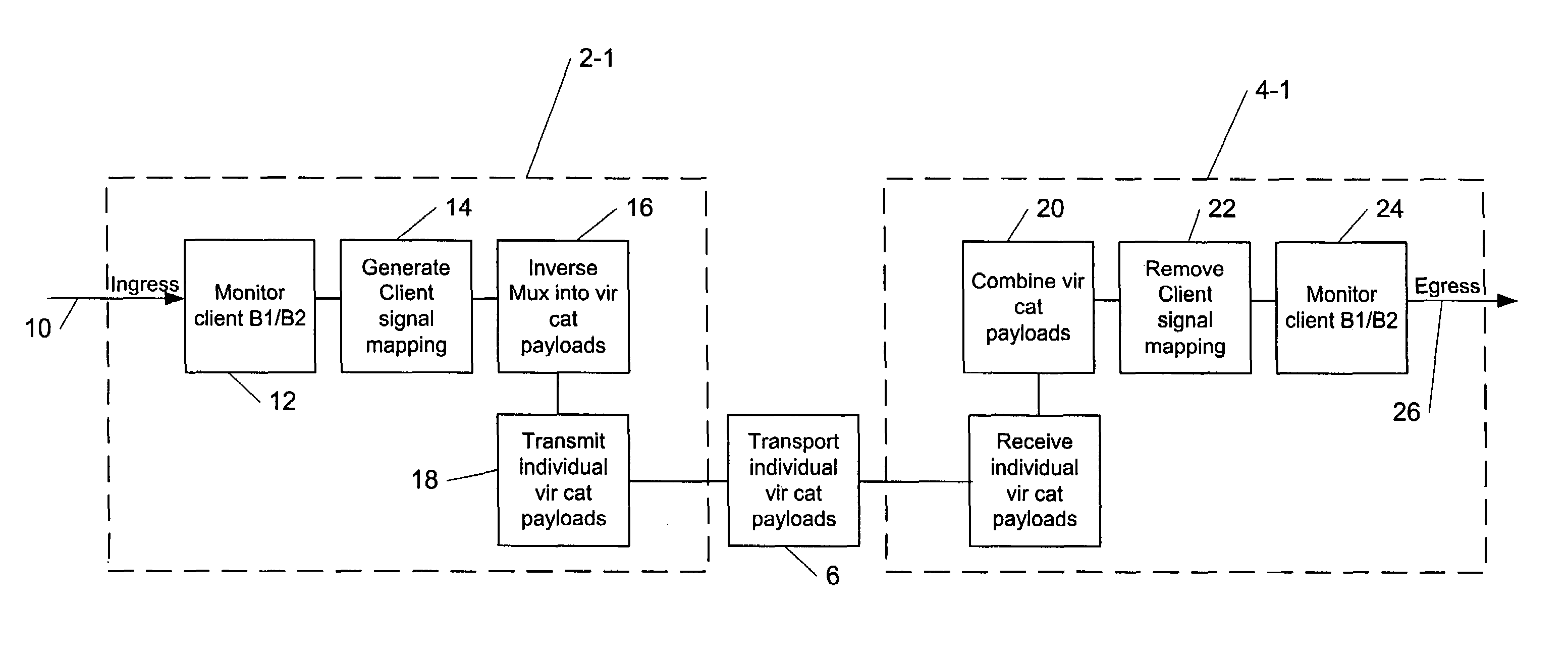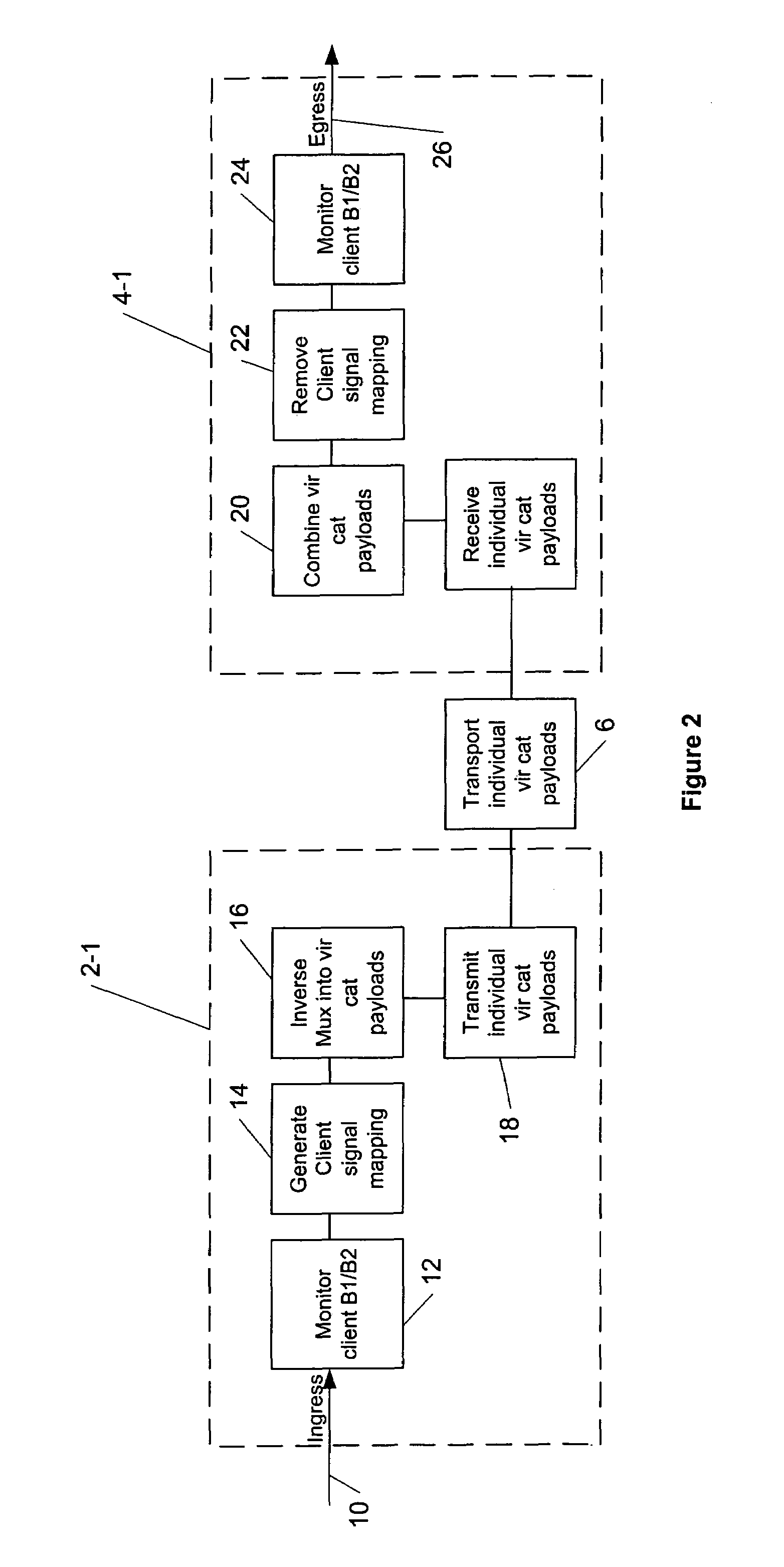Methods and apparatus for transmitting synchronous data
a technology of synchronous data and transmission methods, applied in the direction of electrical equipment, digital transmission, data switching networks, etc., can solve the problems of prohibitively expensive and/or injustifiable bandwidth usage of dedicated sonets or sdh fibre links between two cities, and the present solution does not meet the need economically
- Summary
- Abstract
- Description
- Claims
- Application Information
AI Technical Summary
Benefits of technology
Problems solved by technology
Method used
Image
Examples
Embodiment Construction
[0027]With reference to FIG. 1, a client network operator has a plurality of network elements 2-1, 2-2 and 2-3 forming a SONET / SDH network. The same operator has a second SONET / SDH network, formed by a plurality of network elements 4-1, 4-2 and 4-3 located at a separate geographically distant site from Region A. The network operator wishes to interconnect the region A and region B networks and thus enters an agreement with a carrier to interconnect the two networks over the carrier's SONET / SDH network 6.
[0028]The signals between the region A and region B networks are carried transparently through the carriers network 6 in what is commonly visualised and termed as a pipe 8. Thus data being transferred through the pipe is transferred with the payload, clock content and overhead unaltered. This allows the region A and region B networks to have clock synchronisation and to operate as if directly connected over dark fibre. However, since the client network operator does not need the full...
PUM
 Login to view more
Login to view more Abstract
Description
Claims
Application Information
 Login to view more
Login to view more - R&D Engineer
- R&D Manager
- IP Professional
- Industry Leading Data Capabilities
- Powerful AI technology
- Patent DNA Extraction
Browse by: Latest US Patents, China's latest patents, Technical Efficacy Thesaurus, Application Domain, Technology Topic.
© 2024 PatSnap. All rights reserved.Legal|Privacy policy|Modern Slavery Act Transparency Statement|Sitemap



